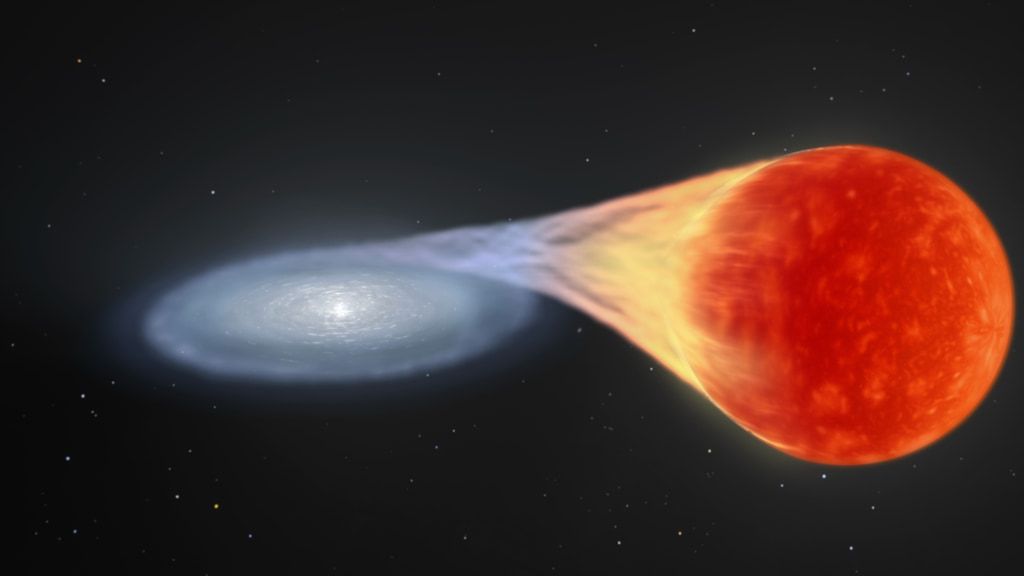Scientists have discovered that cosmic dust can form as a result of Type 1a supernova explosions. This means that it is generated by white dwarfs that interact with ordinary stars. Research is of great importance for understanding the evolution of galaxies.

Type 1a supernovae
An international team of astronomers has discovered that cosmic dust can form as a result of a cosmic explosion, which occurs when a white dwarf takes material from a companion star and then interacts with gas from its immediate surroundings. These events are called Type 1a supernovae, and astronomers often call them “standard candles” because their uniform luminous flow can be used to measure cosmic distances.
“The formation of cosmic dust is of critical importance in astronomy,” says Lifan Wang, a team member and astronomer at Texas A&M University, in a statement. “It is related to literally all phenomena of the cosmos. Understanding the process by which it forms has been one of the key objectives of many modern-day astronomical missions.”
This is not the first time that supernovae have been linked to the formation of cosmic dust, but previous observations have concerned supernovae formed as a result of stellar collapse. This happens when a massive star runs out of fuel needed for internal nuclear fusion processes.
This causes the core of the luminary to collapse, giving birth to a black hole or neutron star, while the outer layers are blown away during a supernova explosion. However, core-collapse supernovae do not occur in elliptical galaxies resembling giant swarms of stars, rather than ordered spirals like the Milky Way. Thus, astronomers have tried to explain exactly where the dust in elliptical galaxies comes from.
Now Wang and his colleagues have found the answer: This dust may originate from “white dwarf vampires” who fed on their companion’s material before generating a thermonuclear explosion. “All life forms in the universe are cosmic dust forged in processes related to stellar evolution,” Wang said. “Our paper presents clear evidence of the condensation of a massive amount of dust particles after the explosion of a white dwarf star.”
About white dwarfs and double stars
White dwarfs are dense objects that are born when relatively small stars run out of fuel needed for nuclear fusion and their nuclei collapse. However, these tiny stellar bodies lack the mass necessary for a complete collapse, which would lead to the formation of a black hole or neutron star. Instead, they form white dwarfs.
Our Sun will go through this process when it runs out of hydrogen reserves in its core in about 5 billion years. But while our Sun will die a lonely death as a cooling white dwarf, some other objects exist in binary systems with companion stars that they can use to return to life.
If these stars are close enough to each other, a white dwarf can “steal” matter from the outer layers of its stellar companion. This stolen matter first forms a disk around the white dwarf, and from there penetrates to the surface of the star.
Over time, this matter accumulates, increasing the mass of the white dwarf beyond the so-called Chandrasekhar limit, equal to 1.4 times the mass of the Sun and which is the limit of the mass at which a star can become a supernova. All this eventually leads to a thermonuclear explosion, which is called a Type 1a supernova.
New research by astronomers
To determine whether Type 1a supernovae could explain cosmic dust, Wang and his colleagues observed supernova SN 2018evt for more than three years using a combination of space instruments such as NASA’s Spitzer Space Telescope and the NEOWISE mission, as well as several ground-based observatories.
They discovered that the supernova collided with material that had been cast off stars in the binary system, and saw how the white dwarf fed on its companion before the first shared its thermonuclear fate. This collision, according to the team’s observations, sends shock waves through the escaped gas, while dust forms in the gas itself when it cools after the shock waves have passed.
From this study, it seems that Type 1a supernovae do not produce gas as efficiently as their core collapse counterparts. This disadvantage can be compensated by the fact that Type 1a supernovae interact with the environment so much that they can be a significant, or even dominant, source of dust in elliptical galaxies. The team’s discoveries show that white dwarfs can also play an important role in the continuous cycle of star formation and destruction, as well as in the processes that lead to the emergence of planets, and sometimes life as we know it.
According to www.space.com
Follow us on Twitter to get the most interesting space news in time
https://twitter.comne/ust_magazine


